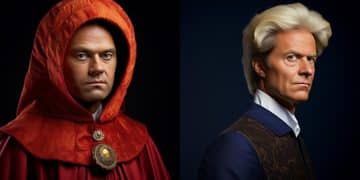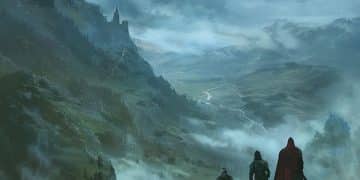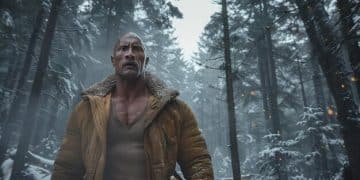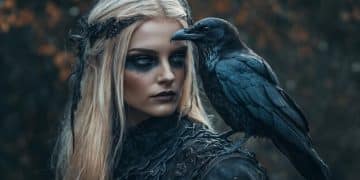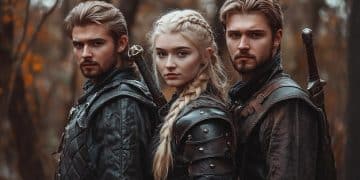Netflix’s The Witcher: Book vs. Show Adaptations Compared
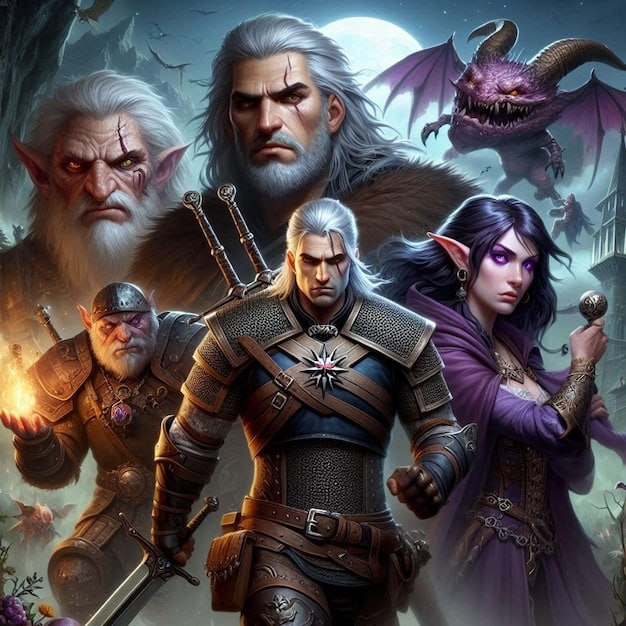
Netflix’s ‘The Witcher’ series, while captivating, diverges significantly from Andrzej Sapkowski’s original books in plot, character development, and world-building, often prioritizing streamlined narratives and broader appeal over the source material’s complexity and nuance.
Netflix’s ‘The Witcher’: How the Show’s Adaptations Differ from the Original Books is a question on every book reader’s mind. The adaptation of Andrzej Sapkowski’s beloved series has been a topic of much discussion, primarily focusing on the differences between the books and the Netflix adaptation.
Plot Divergences in Netflix’s The Witcher
One of the most significant areas where Netflix’s ‘The Witcher’ deviates from the books is in its plot. The series consolidates storylines and alters the chronological order of events, often streamlining narratives for a television audience. This can lead to a different pace and emphasis compared to the more intricate and layered storytelling of the books.
Timeline Compression
In the books, the timelines of Geralt, Yennefer, and Ciri unfold separately before converging. The show, in its initial seasons, attempts to weave these timelines together, which can cause confusion for viewers unfamiliar with the source material. This compression changes the build-up and reveals certain plot points earlier than intended.
Altered Story Arcs
Several key story arcs are either altered or omitted in the Netflix adaptation. Some characters’ motivations are changed, and certain events play out differently, impacting the overall narrative trajectory. This can be seen in the handling of secondary characters and subplots, which often receive less attention or are merged for simplicity.
- The show introduced Nilfgaard way sooner than books to create a sense of urgency.
- Some characters were merged, resulting in a lack of proper character development.
- Ciri’s training and journey were accelerated, missing key elements from the books.
While these changes may serve the purpose of creating a more accessible and fast-paced viewing experience, they also dilute the richness and complexity that fans of the books appreciate. The streamlined approach means that certain thematic elements and character nuances are often lost in translation.
Character Development: Books vs. Netflix
Character development in Netflix’s ‘The Witcher’ also presents notable differences when compared to the original books. The show sometimes simplifies or alters the personalities, backstories, and relationships of key characters. This can affect how viewers perceive and connect with these figures, diverging from the deeper, more nuanced portrayals in the source material.
Geralt of Rivia
Henry Cavill’s portrayal of Geralt has been praised, but the show often emphasizes different aspects of his character compared to the books. The books delve more deeply into Geralt’s internal conflicts, his philosophical outlook, and his complex moral code. The Netflix series tends to focus more on his action-oriented role and stoic demeanor.
Yennefer of Vengerberg
Yennefer’s character arc in the series is significantly expanded and altered. The books gradually reveal her backstory and motivations, while the show frontloads much of this information. Additionally, the series gives Yennefer a more prominent role in certain storylines, which deviates from her more measured presence in the books.
- Yennefer’s origin story is more detailed in show, compared to books.
- Her motivations are more explicit in Netflix’s adaptation.
- Some of her key relationships are portrayed differently.
These changes, while providing more screen time for certain characters, can also dilute the authenticity and depth that fans appreciate in the novels. The balance between adapting and reimagining characters is a delicate one, and opinions vary on whether the show successfully captures the essence of these beloved figures.
World-Building Discrepancies
The world-building in Netflix’s ‘The Witcher’ has also faced scrutiny for its deviations from the detailed and immersive world presented in the books. The series sometimes glosses over the intricate political landscape, the rich cultural nuances, and the complex monster lore that form the backbone of Sapkowski’s universe.
Political Intrigue
The books delve deeply into the political tensions between various kingdoms, empires, and factions. The Netflix series touches on these elements, but often simplifies or consolidates them for ease of understanding. This can result in a less nuanced portrayal of the power struggles and alliances that drive much of the narrative.
Monster Lore
The lore surrounding monsters and the Witcher’s role in hunting them is a central aspect of the books. The series showcases some iconic monsters, but often misses the opportunity to explore the deeper environmental and social contexts that make these creatures so compelling in the source material. The moral ambiguity of Geralt’s choices is also less pronounced.
- The complex political landscape is often oversimplified in the show.
- Detailed cultural nuances of various regions are minimized.
- The monster lore is less pronounced in the Netflix adaptation.
By focusing on a broader narrative, the series sometimes sacrifices the opportunity to immerse viewers in the richly detailed world that Sapkowski created. This can lead to a less immersive and less intellectually stimulating viewing experience for those who appreciate the depth of the source material.
Pacing and Structure
One of the critical differences between Netflix’s ‘The Witcher’ and the original books lies in the pacing and structure of the narrative. The series often adopts a more serialized approach, diverging from the episodic and character-driven structure found in the books. This shift impacts the overall storytelling rhythm and the way events unfold.
Episodic vs. Serialized
The books are characterized by self-contained short stories that gradually contribute to a larger overarching narrative. Each story often focuses on a specific monster hunt or moral dilemma, allowing for a deeper exploration of Geralt’s character and the world around him. The Netflix series, however, tends to favor a more serialized structure, with interconnected storylines and cliffhangers designed to keep viewers engaged across multiple episodes.
Focus on Action
Given its visual medium, the Netflix adaptation naturally places a greater emphasis on action sequences and spectacle. While the books contain their fair share of combat and adventure, they also devote significant attention to dialogue, introspection, and character development. The series often prioritizes action over these quieter, more contemplative moments.
The shift in pacing and structure can be both a strength and a weakness. On one hand, it allows for a more streamlined and accessible viewing experience, appealing to a broader audience. On the other hand, it sacrifices the nuanced character development and thematic depth that made the books so compelling to begin with.
The Impact of Visual Medium
The nature of the visual medium inherently shapes the adaptation of ‘The Witcher.’ Netflix’s ‘The Witcher’ leverages visual storytelling techniques to enhance the narrative. However, these enhancements also introduce differences from the books, as the series interprets and visualizes scenes, characters, and settings in its unique way.
Visual Interpretation
The series’ visual interpretation of characters, monsters, and locations can vary significantly from the descriptions in the books. For example, the appearance of certain monsters or the design of key locations like Kaer Morhen may differ from what readers imagined. These visual choices can impact how viewers perceive the world and its inhabitants.
Emotional Tone
The series also uses music, cinematography, and editing to create a specific emotional tone. While the books rely on descriptive language and internal monologues to convey emotions, the show uses visual and auditory cues to evoke feelings in the audience. This can lead to differences in how certain scenes are interpreted and experienced.
Ultimately, the adaptation’s visual medium offers both opportunities and challenges. It allows for a more immersive and visually stunning experience, but it also necessitates choices that can deviate from the source material. The key is to strike a balance between respecting the original vision and making the story work effectively on screen.
Fan Reception and Critical Response
Fan reception and critical response to Netflix’s ‘The Witcher’ have been mixed, largely due to the aforementioned differences between the show and the books. While some viewers appreciate the adaptation’s accessibility and entertainment value, others criticize it for straying too far from the source material. These varying opinions reflect the complex challenge of adapting a beloved book series for a broad audience.
Book Purists vs. Casual Viewers
Book purists often express disapproval when the series deviates from the plot, characters, or world-building established in the novels. They may feel that the adaptation diminishes the depth and complexity of Sapkowski’s creation. Casual viewers, on the other hand, may be more accepting of changes, as long as the show is engaging and well-produced.
Critical Acclaim
Critics have offered a range of opinions on the Netflix adaptation. Some praise the show for its strong performances, impressive visual effects, and compelling action sequences. Others criticize it for its convoluted storylines, inconsistent character development, and lack of fidelity to the source material.
- The series has received mixed reviews due to its adaptation choices.
- Book purists often critique deviations from the novels.
- Casual viewers may be more accepting of changes for entertainment value.
The overall reception of ‘The Witcher’ highlights the difficulty of pleasing everyone when adapting a popular book series. It also underscores the importance of striking a balance between respecting the source material and creating a standalone work that can stand on its own merits.
| Key Point | Brief Description |
|---|---|
| ⚔️ Plot Divergences | The series condenses storylines and alters event chronology. |
| 🎭 Character Development | Personalities and backstories are simplified or altered. |
| 🌍 World-Building | Political landscapes and lore are often glossed over. |
| 🎬 Visual Medium | Visuals enhance narrative, but introduce differences. |
Frequently Asked Questions
▼
Netflix’s adaptation weaves together the timelines of Geralt, Yennefer, and Ciri, which unfold separately in the books. This compression accelerates the plot and brings characters together sooner than in the original stories.
▼
Geralt’s internal conflicts are less explored, Yennefer’s backstory is frontloaded, and Ciri’s training is accelerated. These changes impact how viewers perceive these characters compared to the book portrayals.
▼
The series often consolidates political factions and power struggles for ease of understanding. This simplification results in a less nuanced portrayal of the complex political tensions found in the books.
▼
Book purists critique deviations from the original material, while casual viewers may appreciate the show’s entertainment value. This split reflects the challenge of adapting a beloved series for a broad audience.
▼
The visual medium allows for stunning interpretations but necessitates choices that can differ from the books. This includes the appearance of monsters, the design of locations, and the emotional tone of scenes.
Conclusion
In conclusion, while Netflix’s ‘The Witcher’ brings Andrzej Sapkowski’s world to a broader audience, it takes significant liberties with the source material. From plot alterations and character simplifications to changes in world-building and pacing, the series offers a different experience compared to the books. Whether these changes enhance or detract from the story is a matter of personal opinion, but understanding these differences is key to appreciating both versions of ‘The Witcher’ on their own terms.
